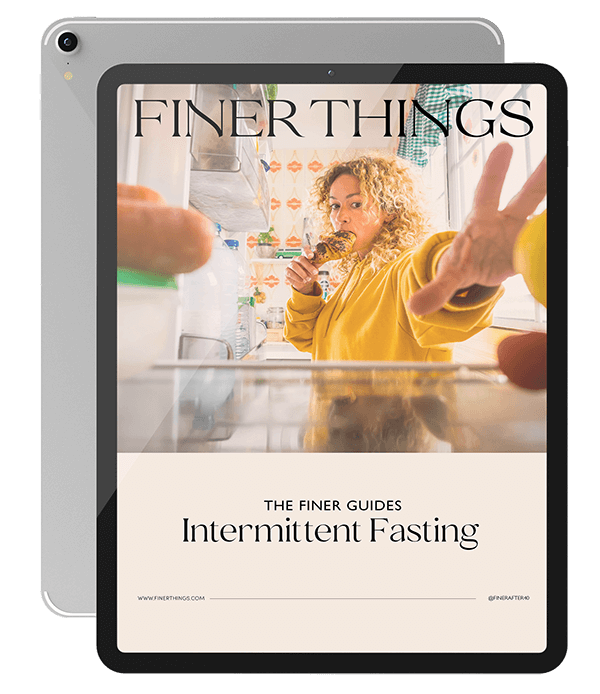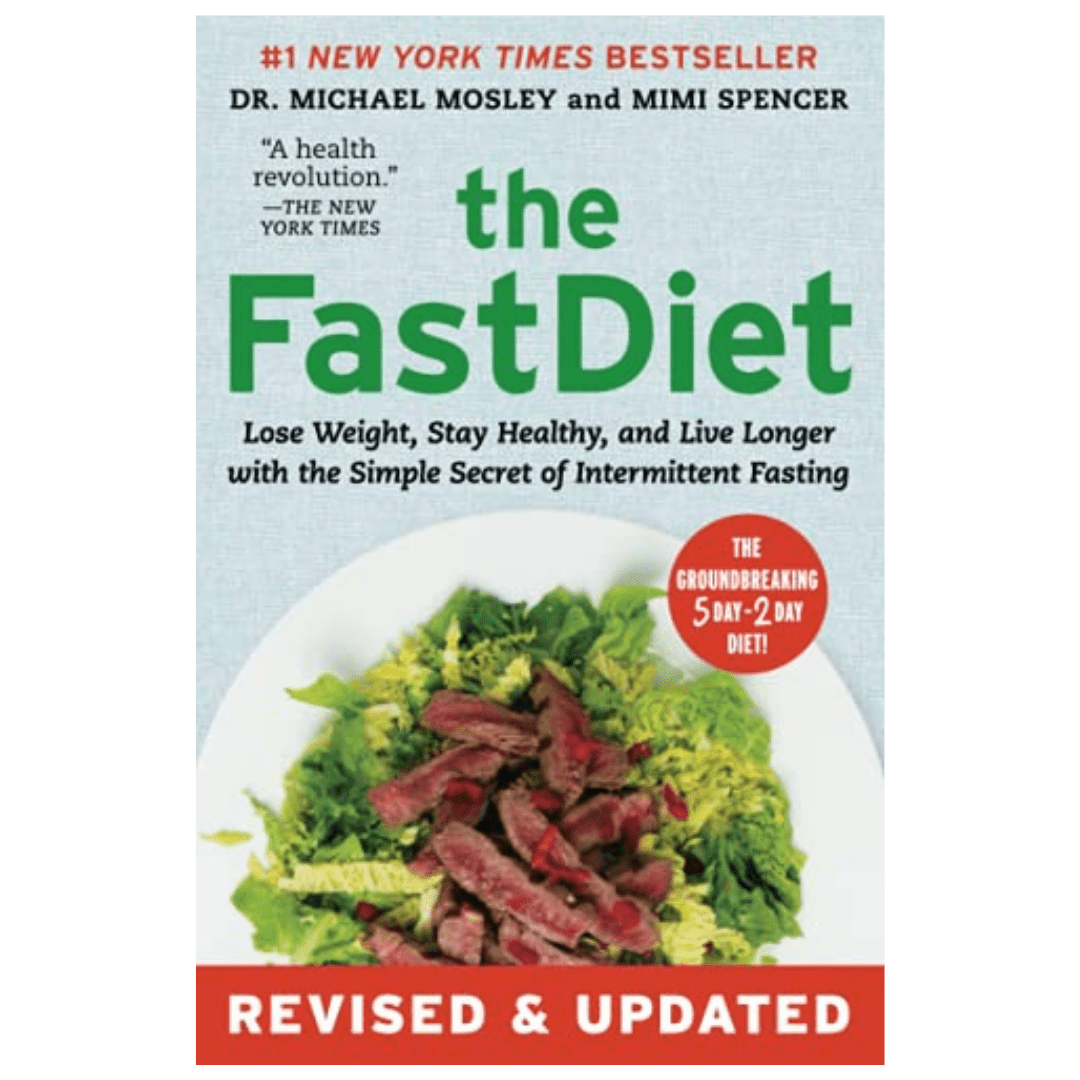Intermittent Fasting For Women Over 50 – A Complete Guide

By Christina Lyon
There’s no shortage of dieting trends for weight loss, but is intermittent fasting one of them? In recent years, intermittent fasting has made headlines, with celebs like Jennifer Aniston, Molly Sims, and Kate Walsh endorsing the diet. But here’s the thing, ask any of them, and they’ll tell you that intermittent fasting isn’t a diet but a lifestyle of time-restricted eating habits that help you lose weight, practice wellness, and feel healthier than ever.
But is intermittent fasting for women over 50 effective or just another diet, “detox” fad? Keep reading to find out!
Disclaimer: We recommend meeting with a certified dietitian or seeking medical advice before introducing any significant dietary changes.
What is Intermittent Fasting?
Intermittent fasting is a time-restricted diet where you switch from fasting to eating. There are many ways to do it, but ultimately, you’re focusing on time windows rather than the foods you eat.
The concept builds on our prehistoric ancestors, who went long periods between hunting and eating. They also got much more activity than we do presently. In theory, following a similar eating pattern as early humans can reduce the risk of high blood pressure, obesity, and heart disease.
Some proponents claim that intermittent fasting helps the body achieve ketosis. During this state, the body lacks carbs and instead will burn fat and turn it into fuel, encouraging fat loss and giving you more energy. Sounds pretty good, right?
Keto Vs. Intermittent Fasting
Isn’t that the ketogenic diet? Not exactly; the diets are different, but they have parallel benefits. Keto prohibits specific foods, while Intermittent Fasting focuses on healthy eating during certain times.
Evidence supports that the diet can help in losing weight, so how does it work?
Ultimately, the concept isn’t strict when it comes to eating a well-rounded diet of whole foods. The goal is to restructure precisely when you eat food rather than what you eat.
Mainly, you don’t eat or drink anything (besides water and zero-calorie drinks) while fasting. Then, when it’s time to eat, you’ll load up on low-carb, healthy foods like:
- Complex carbohydrates
- Lean proteins
- Fruits and veggies
- Whole grains
- healthy fats
The beauty of the diet is that you can still eat many of your favorite (healthy) foods, but only during your eating window. Next, we’ll look at your eating window options.
Types of Intermittent Fasting
So, when are you supposed to eat? For each intermittent fasting plan, you’ll have a ratio of fasting and eating times. Let’s break down each of the eating-fasting ratios.
12:12
For beginners and women over 50, this is a great starting point. You’ll eat during a 12-hour window and fast for 12 hours, with the primary goal being to cut down on excessive eating after dinner.
16:8
On this plan, you’ll eat during an 8-hour window and fast for 16 hours. So, a daily routine might look like this:
- 11 a.m.: Breakfast
- 3 p.m.: Lunch
- 6:00 p.m.: Dinner
If you want dessert, be sure to wrap up all eating before 7 p.m. However, you can play around with any 8-hour window to find the right eating window for your body.
20:4
Now we’re getting into some serious fasting. With this plan, you’ll fast for 20 hours and eat for four. It’s unlikely you’ll eat three square meals a day on this plan. Instead, choose two substantial meals that meet your dietary needs and one snack.
Get The Finer Life
Our Sunday email has tips and content you will love – exclusively for our subscribers.
"*" indicates required fields
You might want to avoid starting with this plan. Instead, build up to it by starting with one of the previously mentioned fasting schedules. Your doctor may discourage you from this plan altogether due to the restrictive eating windows.
5:2
With this ratio, you’re not looking at hours but weekdays. You’ll eat regularly for five days and fast for two. Many like this plan because they can eat normally during the week and fast on the weekends, or choose two days in the week with low activity to fast.
Alternate Day Fasting (ADF)
Just like the name suggests, you’re going to eat regularly one day and fast the next. Many people use a variation of this where the fasting day isn’t entirely fasted. Instead, they’ll consume a low density (often around 500 calories) throughout the day.
So, we’ve looked at the intermittent fasting plans, but is it safe or beneficial for women over 50?

Benefits for Women Over 50
For many women, the biggest draw to intermittent fasting is the hope of losing weight, but is it safe for mature women?
One study put women over 50 into three different dietary groups: a Mediterranean diet, an alternate-day fasting diet meeting 100% caloric needs, and an alternate-day fasting diet meeting 70% of caloric needs.
The findings? Women in the alternate-day fasting meeting 70% of caloric intake had the best results, losing the most body fat and weight.
There’s a body of recent research that supports intermittent fasting for women over 50. However, only you can decide what’s best for your body.
Women over 50 tend to gain weight during menopause or while postmenopausal due to fluctuating hormone levels. Additionally, women tend to have higher hunger hormones (ghrelins), leading to belly fat. So, it’s reasonable to assume that intermittent fasting is worth a try, but you’ll want to do it safely to optimize the benefits.
Along with losing weight, intermittent fasting benefits include:
- Lowering blood pressure
- Preventing obesity and diabetes
- Lowering body fat
- Improving cognitive brain functioning and memory recall
- Lowering cholesterol and glucose levels
- Preventing heart disease
- Promoting a healthy lifestyle and boosting physical stamina
Sounds great, right? However, intermittent fasting isn’t safe for everyone. If you have diabetes, blood sugar issues, or have suffered from eating disorders, you should consult with your doctor and consider avoiding the diet.
Otherwise, here’s a list of tips to help you get the most out of intermittent fasting.
Intermittent Fasting Tips for Women over 50
If you’re considering trying intermittent fasting, here are some weight loss tips to help you on your journey:
- Focus on eating bountiful whole foods that stave off hunger and leave you fuller, longer.
- Avoid empty carbs and fast foods, which only temporarily fill you up before the hunger pangs set in.
- Incorporate an exercise routine to help with fat burning and avoid weight gain long-term.
- Experiment with different eating and fasting windows. Your body will respond better to specific time windows than others, so try a few until you find a rhythm. Women over 50 should start with a 12:12 or 16:8 ratio to allow the body to adjust to this new eating routine.
- Consult with your doctor for medical advice. Your doctor knows your medical history and background and can guide you in approaching intermittent fasting most healthily.
- If you notice weight gain, fatigue, lightheadedness, muscle loss, or insomnia, you might not be getting enough calories. Before you try the diet, use a calorie tracking app like MyFitnessPal to ensure you’re getting adequate caloric intake.
- Order an Intermittent Fasting book like the FastDiet from Amazon to stay on track with healthy recipes and tips for daily fasting.
Ready to Give It A Try?
There’s a lot to learn about intermittent fasting, but thus far, human studies show that it can promote weight loss and provide abundant health benefits.
However, any time you introduce a new diet or lifestyle choice, it’s essential to test the waters. Before going all in, consult with your medical doctor. Also, keep these tips handy to make the transition easier and more sustainable.
The above content may contain affiliate links. Finer Things earns from qualifying purchases. When you click and shop, we receive a small commission to support our writers.

Want a Free Guide?
You will receive our free 19-page guide and access to our exclusive content, private invitations, and tips you’ll love.
"*" indicates required fields





